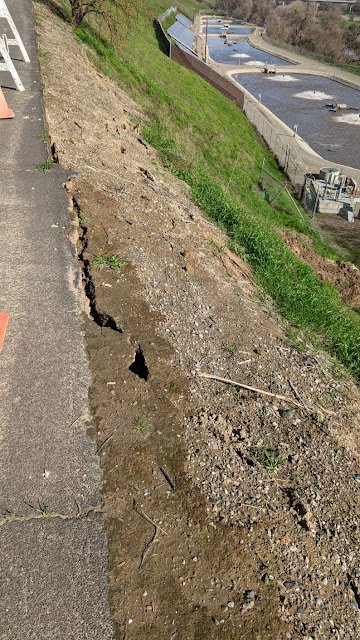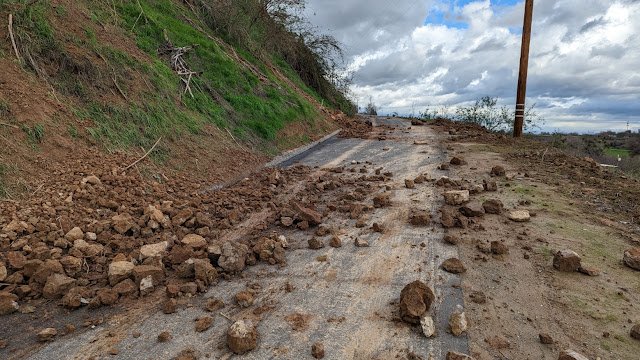One may be shocked to listen to that regardless that the rivers rose, some areas had been much less affected by the flooding. Within the case of my residence county, Stanislaus, there have been (and proceed to be) issues alongside the decrease reaches of the Tuolumne and San Joaquin Rivers, however on the east facet of the valley there have been few ailing results. Alongside my normal walkway, the Tuolumne River Parkway Path in Waterford, the harm was of a sort not typically related to a flat valley ground: mass losing, or mass motion.
The explanation has to do with a quirk of the geological historical past of our area. Throughout the Pleistocene ice ages during the last two million years, glaciers coated maybe 30% of the Sierra Nevada on repeated events. The ice by no means reached the Nice Valley, however the streams of ice floor up huge quantities of rock to sand and dirt, and the rivers had been swollen with muddy meltwater. Rivers just like the Tuolumne and Merced constructed up huge alluvial followers that resulted in larger elevations close to the mountain’s edge, on the order of some tens of toes. That does not sound like a lot, however when the glaciers ebbed, the muddy rivers turned clear, and the rivers started to erode into these previous alluvial followers, forming terraces and bluffs.On the one hand, these bluffs and terraces have protected cities like Modesto and Turlock from river flooding as a result of even the worst of floods can not overtop the bluffs the place a lot of the area’s cities are situated. Alternatively, the bluffs are steep and are composed of loosely consolidated sediments. That is the best recipe for mass losing, the downhill motion of unfastened particles and rock beneath the affect of gravity. I acquired a wonderful introduction to quite a lot of mass losing occasions after the ultimate storm final week. It was a large number alongside the path.
Mass losing occurs due to gravity, however an overaccumulation of water can considerably add to the depth and diploma of motion. The motion takes three varieties: falls, flows, and slides. I noticed examples of all three this week.
Within the image above, there was a lot water constructed up within the soil that the slope failed quickly and the fluid mixture of silt and water flowed and coated a part of the path under. That is referred to as a mudflow. In numerous circumstances, particularly involving glaciers and erupting volcanoes or desert cloudbursts, mudflows are some of the harmful types of mass losing. A single volcanic mudflow in Colombia in 1985 killed some 25,000 folks.
Mass losing consists of flows, falls, and slides, however some of the pervasive and environment friendly types of mass-wasting is sort of mundane within the face of all of the drama seen above. Over time all uncovered floor climate and develop right into a unfastened floor cowl referred to as regolith. If the regolith can assist flora, it’s known as soil. If any slope exists in any respect, the soil and regolith will transfer transfer downhill imperceptibly over many months or years. Soil creep is just not dramatic, however within the large image it most likely strikes extra materials than some other type of mass losing. It by no means kills anybody, however it would deform and bulldoze constructions constructed into the slope over time. It is why previous barbwire fences on hilly nation roads at all times appear to be tilting over. It could actually even tilt phone poles.
Trending Merchandise
















